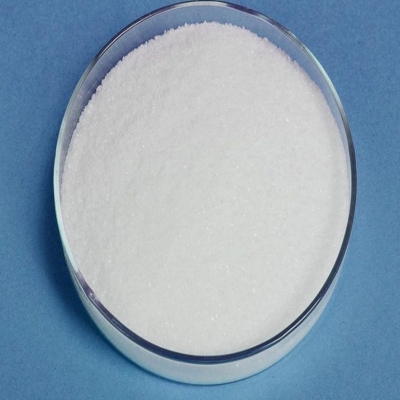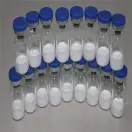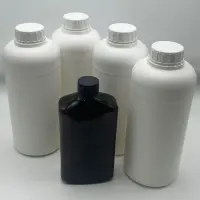-
Categories
-
Pharmaceutical Intermediates
-
Active Pharmaceutical Ingredients
-
Food Additives
- Industrial Coatings
- Agrochemicals
- Dyes and Pigments
- Surfactant
- Flavors and Fragrances
- Chemical Reagents
- Catalyst and Auxiliary
- Natural Products
- Inorganic Chemistry
-
Organic Chemistry
-
Biochemical Engineering
- Analytical Chemistry
- Cosmetic Ingredient
-
Pharmaceutical Intermediates
Promotion
ECHEMI Mall
Wholesale
Weekly Price
Exhibition
News
-
Trade Service
The key component in this process is PEG-lipid, because the PEG chain is hydrophilic, so it can coat the particle and determine its final thermodynamically stable size
.
By changing the mole fraction of PEG, the size of the LNP can be controlled.
For example, for a 100 nm particle, the PEG-lipid is 0.
5% mole fraction, and the 43 nm particle size is 3% PEG-lipid
.
An important recent data showed that when the mRNA LNP suspension is diluted in an aqueous buffer or dialyzed in an aqueous buffer to increase the pH and eliminate ethanol, the structure and size of the LNP continue to change after mixing
.
The initial mixing of the water phase and the lipid phase produces a pH value close to 5.
5, which protonates the ionizable lipid, and its LNP pKa value is close to 6.
5, and promotes mRNA binding and encapsulation
.
Then increase the pH value through dilution, dialysis or tangential flow filtration, which can neutralize ionizable lipids.
When ionizable lipids become neutral, their solubility is also reduced, resulting in the formation of a larger hydrophobic lipid structure Domain, thereby driving the fusion process of LNP, thereby increasing its size, the core of LNP becomes an amorphous electronic dense phase, mainly containing ionizable lipids that bind to mRNA
.
It is estimated that in this process, up to 36 vesicles can fuse to form only one final LNP
.
This study and another study using the neutron scattering method also showed that DSPC forms a double layer below the PEG layer on the periphery of the LNP, and its central core is mainly ionizable lipids that bind to mRNA
.
05
Determinants of delivery system performance
The determinants of the performance of the mRNA delivery system are multi-factorial and interactive, including: (1) the efficiency of their delivery to appropriate cells and effective release of mRNA to the cytoplasm for translation; (2) adjuvants, which can enhance the immune response, which are known Lipid nanoparticles have their own adjuvant activity; (3) to minimize the adverse events or toxicity that may be caused by excessive inflammation at the injection site or systemic distribution and off-target expression
.
4) Dose: In the SARS-CoV-2 clinical trial, the high-dose dose currently being pursued is the easiest to understand the effectiveness of the mRNA delivery system, from 1 to 100 μg
.
The doses in human trials are clearly divided into high doses of nucleoside modified RNA (Moderna, BioNTech) 30–100 μg, unmodified RNA (CureVac, Translate Bio) as low as 7.
5–20 μg, and even low doses of 10–10 μg; 5) The most frequently cited feature of LNP that determines its potency or delivery efficiency is its pKa
.
pKa is the pH at which 50% of the ionizable lipids in the LNP are protonated
.
A good explanation for this pKa-dependent model is based on the fact that the ionizable lipids in LNP are close to neutral at pH 7.
4, and after being internalized into the cell, the pH of the endosome will follow through the endolysosome pathway.
The development began to decline
.
The ionizable lipid is protonated, and then it is combined with the anionic endogenous phospholipid of the endosome and the bilayer structure is destroyed, thereby releasing the mRNA into the cytoplasm for translation by the ribosome
.
06
in conclusion
In the past two decades, mRNA therapy technology has made extraordinary progress.
The first is to determine the use of modified nucleosides and sequence engineering technology to control the innate immunogenicity of mRNA, as well as its application in vaccines and other therapeutic indications.
mRNA method
.
Compared with the previous system, the use of the lipid nanoparticle prototype used in siRNA delivery has led to an order of magnitude increase in delivery efficiency, and it is still improving, mainly due to the design of new ionizable lipids
.
Many aspects of mRNA LNP structure, function, potency, targeting and biological characteristics (such as adjuvant properties) remain to be explored in order to make full use of the potential of this powerful conversion therapy
.
references:
https:// Nanomaterial Delivery Systems for mRNA Vaccines.







